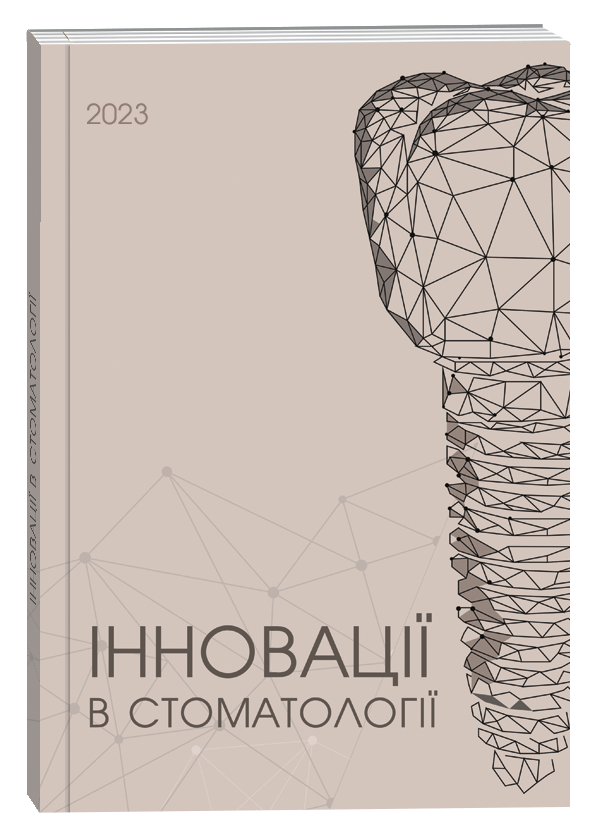METABOLISM OF NITROGEN COMPOUNDS IN THE ORAL FLUID OF PATIENTS WITH ACID-DEPENDENT DISEASES OF THE UPPER GASTROINTESTINAL TRACT
DOI:
https://doi.org/10.35220/2523-420X/2025.2.15Keywords:
gingivitis, nitrogen compounds, oral fluid, gastritis, duodenitisAbstract
The oral and gingival fluid and plaque contain a large number of microorganisms involved in the metabolism of nitrogen compounds. However, the relationship between different enzymes of the nitrogen cycle, as well as the factors affecting this relationship, remain unclear. The purpose of the study was to investigate the state of nitrogen-containing compounds metabolism in the oral fluid in patients with chronic catarrhal gingivitis and concomitant acid-dependent diseases of the upper gastrointestinal tract. Materials and methods.To solve the tasks, 105 patients aged 18 to 21 years were examined. Group 1 consisted of 37 patients with chronic catarrhal gingivitis, with concomitant chronic gastritis, duodenitis. The second group included 35 patients with chronic catarrhal gingivitis without somatic pathology. Group 3 – control group, included 33 patients (without periodontal and somatic pathology). The hydrogen index of the oral fluid was determined using a pH meter (pH-150 MA). The level of nitrates and nitrites was determined by modifying the Griess reaction. The activity of oral fluid nitrate reductase and nitrite reductase was determined by the reduction of nitrate and nitrite using a colorimeter. The activity of oral fluid urease was determined on the basis of ammonia formation, with Nessler's reagent. Statistical processing of the results was carried out by methods of analysis of variance using Student's t-test (p < 0.01 was considered significant). Results of the study. The activity of nitrate reductase and nitrite reductase had the highest values in the group of children with concomitant acid-dependent diseases. Acidification of the oral fluid created conditions for chemical denitrification processes with the formation of nitric oxide from nitrates and nitrites. Indicators of the background content of nitrogen metabolites in the oral fluid were highest in the group of somatically healthy children with chronic catarrhal gingivitis, which is a consequence of low activity of the nitrate-nitrite reductase complex of the oral cavity. The urease activity was the highest in patients of the second group and amounted to 2.56±0.04 μmol/L×min), which significantly exceeded the value in the control group of children and indicated a significant microbial contamination of periodontal tissues. Low values of urease activity were observed in patients of the first group, since the acidic environment of the oral cavity is unfavorable for the vital activity of periodontopathogenic microflora. Conclusions. In patients with acid-dependent diseases of the gastrointestinal tract, the process of reducing nitrates to nitrites and then to nitric oxide occurs not only with the help of microbial enzymes, but also chemically due to the ingestion of acidic gastric contents into the esophagus and oral cavity. The accumulation of nitrites and nitrates in the oral fluid with low activity of reductase enzymes indicated inflammatory processes in the gums.The high activity of urease in patients with chronic catarrhal gingivitis with low activity of nitrate and nitrite reductase enzymes indicated a significant microbial contamination of periodontal tissues. The peculiarities of nitrogen balance in the oral fluid in patients with acid-dependent diseases of the upper gastrointestinal tract require a personalized approach to the treatment of chronic catarrhal gingivitis in this group of patients.
References
Schreiber F., Stief P., Gieseke A. et al. Denitrification in human dental plaque. BMC Biol. 2010. No 24. DOI: 10.1186/1741-7007-8-24.
Sánchez G. A., Miozza V. A., Delgado A., Busch L. Total Salivary Nitrates and Nitrites in Oral Health and Periodontal Disease. Nitric Oxide: Biol and Chem. 2014. No 36. Р. 31–35. DOI: org/10.1016/j.niox.2013.10.012.
Liu H., Huang Y., Huang M. et al. From nitrate to NO: potential effects of nitrate-reducing bacteria on systemic health and disease. Eur J Med Res. 2023. No. 425. DOI: org/10.1186/s40001-023-01413-y.
Rajasekaran J.J., Krishnamurthy H.K., Bosco J. et al. Oral Microbiome: A Review of Its Impact on Oral and Systemic Health. Microorg. 2024. No 12(9). Р. 1797. DOI: org/10.3390/microorganisms12091797.
Romanenko Ye. H., Hryhorenko L. V., Komskyi M. P., Sribnyk P. L., Sinkovska O. O. Nitric oxide formation in the metabolism of nitrates in the oral cavity. Zaporozhye Med J. 2019. No 21 (5), Р. 685–690. DOI: 10.14739/ 2310-1210. 2019.5.179472.
Schlagenhauf U. On the Role of Dietary Nitrate in the Maintenance of Systemic and Oral Health. Dent J. 2022. 10(5). Р. 84. DOI:10.3390/ dj10050084.
Tamai R., Kiyoura Y. Candida Infections: The Role of Saliva in Oral Health–A Narrative Review. Microorganisms. 2025. № 13(4) Р. 717. DOI: org/10.3390/ microorganisms13040717.
Поливода С.М., Черепок О.О., Войтович О.В. Спосіб визначення оксиду азоту. Промислова власність. 2001. № 7. 36 с.
Green L.C., Wagner D.A., Glogowski J. et al. Analysis of nitrate, nitrite, and [15N] nitrate in biological fluids. Anal Biochem. 1982. No. 1. Р. 131–138.
Levytskyi A.P., Makarenko O.A., Selivanska I.A. et al. Enzymatic methods for determination of oral dysbiosis for screening pro-and prebiotics: method guidelines. Kiev: GFC, 2007. 20 с.








